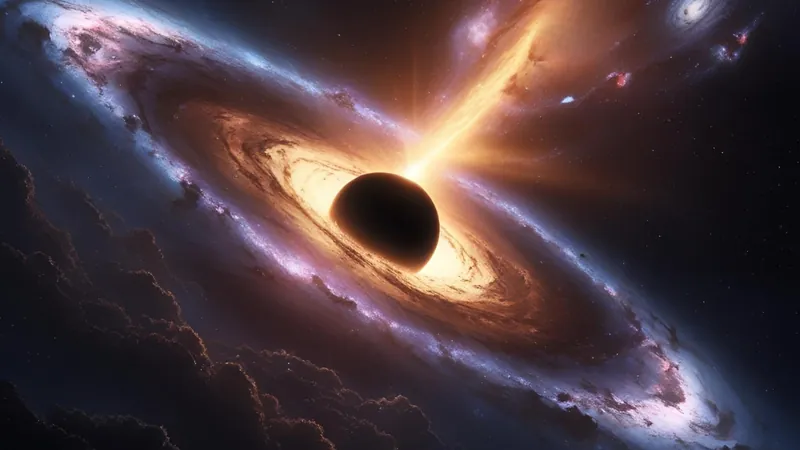
Unlocking the Secrets of the Universe: Could Black Holes Hold the Key to Quantum Gravity?
2025-07-01
Author: John Tan
The elusive concept of quantum gravity, often deemed the 'holy grail of physics', might be closer than we think, nestled within a groundbreaking method of creating black holes.
Recent research introduces intriguing quantum corrections to Einstein's groundbreaking 1916 theory of gravity, known as "general relativity." Black holes, which first appeared as solutions to Einstein's equations, are at the center of this breakthrough.
This innovative approach not only proposes a new way to fabricate black holes but also hints at a potential pathway toward achieving a unified theory that marries general relativity with quantum mechanics.
While general relativity elegantly describes gravity and cosmic phenomena on vast scales, quantum mechanics excels in the realm of the subatomic. Yet, despite their individual successes and decades of refinement, the two have yet to converge into a theory of quantum gravity.
Physicists grapple with the perplexing unknowns hiding within the depths of black holes. As University of Sussex physicist Xavier Calmet points out, "Black holes are regions where gravity is so intense that not even light can escape. They are traditionally analyzed through the lens of general relativity, yet at their core lies a singularity where the known laws of physics falter."
At these singularities, values can reach infinity—a notion physicists disfavor, as it indicates the failure of our equations to accurately describe the cosmos.
Calmet explains that this breakdown suggests general relativity is incomplete, hinting at the necessity for a quantum theory of gravity. He states, "We theorize that while general relativity is valid on larger scales, a quantum gravity theory must replace it at microscopic distances, merging Einstein's equations with quantum principles. This represents the ultimate pursuit in theoretical physics."
The quest for a unified theory has led to the exploration of string theory, a concept proposing that fundamental particles are actually tiny, vibrating strings. However, experimental validation remains elusive, and string theory requires a universe with at least 11 dimensions—far from the observable reality we can test.
Despite the hurdles, Calmet and his team discovered that it's possible to derive quantum solutions for black holes that don't exist within classical general relativity. These solutions are mathematical constructions that can be calculated near the event horizon and even at considerable distances from the black hole's center.
Calmet emphasizes, "While these new quantum solutions cannot be fully constructed close to the singularity—where a comprehensive understanding of quantum gravity is essential—we have still shown that entirely new types of black holes could exist within a quantum framework, separate from those predicted by general relativity."
This advancement represents a significant stride toward unraveling the intricate relationship between quantum mechanics and gravity. Yet, distinguishing which of these theories accurately describes the black holes we observe is a formidable challenge.
As Calmet notes, "The black holes we can observe may very well be rooted in our new solutions of quantum gravity, as both theories share similarities on grand scales. This makes it difficult to devise experiments that could differentiate between them."
For now, the secrets of quantum gravity may remain shrouded within the enigma of black holes, posing questions that continue to baffle scientists.

 Brasil (PT)
Brasil (PT)
 Canada (EN)
Canada (EN)
 Chile (ES)
Chile (ES)
 Česko (CS)
Česko (CS)
 대한민국 (KO)
대한민국 (KO)
 España (ES)
España (ES)
 France (FR)
France (FR)
 Hong Kong (EN)
Hong Kong (EN)
 Italia (IT)
Italia (IT)
 日本 (JA)
日本 (JA)
 Magyarország (HU)
Magyarország (HU)
 Norge (NO)
Norge (NO)
 Polska (PL)
Polska (PL)
 Schweiz (DE)
Schweiz (DE)
 Singapore (EN)
Singapore (EN)
 Sverige (SV)
Sverige (SV)
 Suomi (FI)
Suomi (FI)
 Türkiye (TR)
Türkiye (TR)
 الإمارات العربية المتحدة (AR)
الإمارات العربية المتحدة (AR)